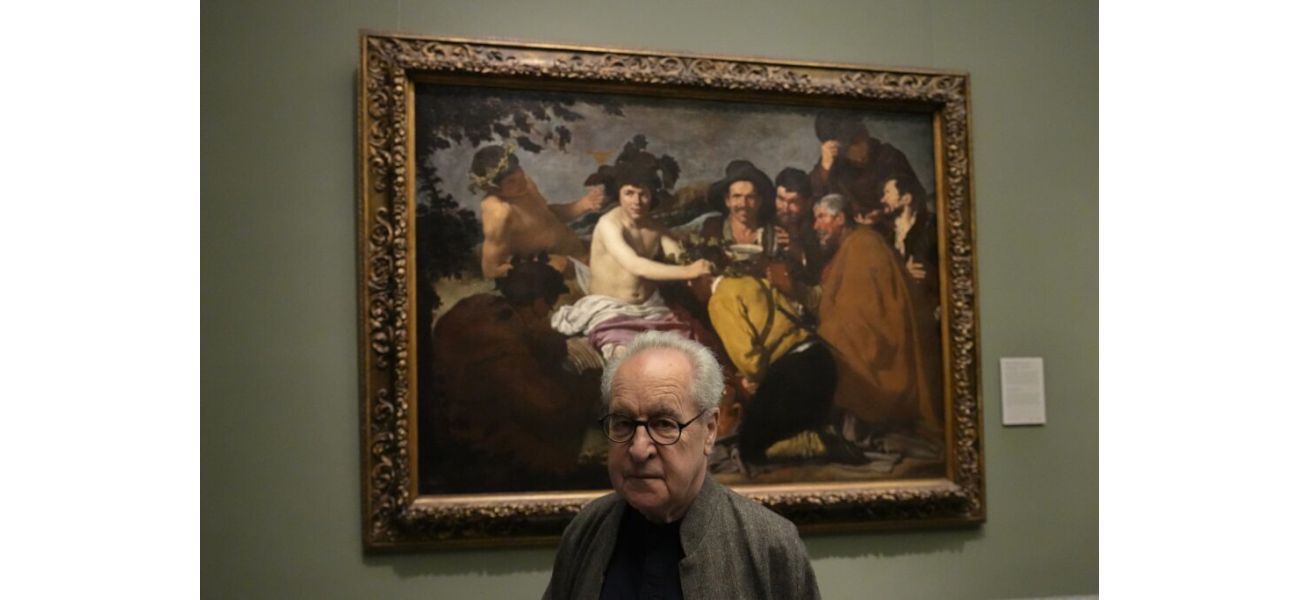Novelist John Banville takes us on a tour of Spain's Prado Museum where the pictures seem to be looking at us.
An artist in Madrid is captivated by the intense gaze of the eyes in his paintings.
November 2nd 2024.

John Banville, an acclaimed Irish novelist, has a particular fascination with the Prado Museum in Madrid. He prefers to visit during its opening hours, even though he has been given the privilege to browse anytime as part of a literary fellowship. The reason? The eyes of the subjects in the paintings seem to follow him, blurring the line between art and reality.
Banville admits that he finds the museum eerie after hours, with all the “multitude of watchers” hanging from the walls. He turns away from the piercing gaze of Diego Velázquez in his masterpiece, “Las Meninas”. The painting, a masterpiece of Baroque art, has captivated artists for generations with its enigmatic and complex composition. Banville, with his poetic attention to detail, is no exception.
During his month-long stay at the Prado, as part of the museum’s “Writing the Prado” program, Banville has had privileged access to areas off-limits to the public, such as the restoration workshops. The program, sponsored by the Loewe Foundation, invites acclaimed authors to immerse themselves in the museum and produce a short work of fiction, with the help of Granta en español magazine.
Banville, the author of “The Sea” and other acclaimed works, has been pondering over what to write during his stay at the Prado. He mentions the idea of a story about someone being followed by the piercing eyes of the paintings. The idea is inspired by his own experience of feeling watched by the paintings in the museum.
As a teenager, Banville was tempted to pick up painting in addition to his writing, but he quickly realized that his true talent was with words. He jokingly admits to having painted some “dreadful pictures” and is relieved that they will never be seen by the public.
With over 3.2 million visitors last year, the Prado is a popular destination for art lovers. Its collection of over 4,000 artworks includes some of the most renowned masterpieces of the Spanish golden age, such as works by Velázquez, Rubens, Bosch, Goya, El Greco, and Titian. Banville finds solace in the museum, away from the modern world, and is pleased that taking pictures is strictly prohibited. He believes that people should focus on admiring the artwork rather than taking photos.
During his visit, Banville is drawn to Ruben’s “The Garden of Love” and Velázquez’s “The Feast of Bacchus”. He jokes that the women in Ruben’s painting look like they are made of bread dough, while the drunkards in Velázquez’s work seem to be noticing him. Banville is also taking his first month off from writing in decades, enjoying the sunny weather in Madrid while his family back in Ireland is enduring bad weather.
At 78 years old, Banville is unsure how many books he has left in him. However, he is certain that true art cannot be replicated by artificial intelligence. To him, a work of art is alive and cannot be imitated. As he continues to stroll through the Prado, surrounded by throngs of museumgoers, Banville is reminded of the ever-present gaze of the paintings, challenging him to create something as masterful as Velázquez’s “Las Meninas”.
Banville admits that he finds the museum eerie after hours, with all the “multitude of watchers” hanging from the walls. He turns away from the piercing gaze of Diego Velázquez in his masterpiece, “Las Meninas”. The painting, a masterpiece of Baroque art, has captivated artists for generations with its enigmatic and complex composition. Banville, with his poetic attention to detail, is no exception.
During his month-long stay at the Prado, as part of the museum’s “Writing the Prado” program, Banville has had privileged access to areas off-limits to the public, such as the restoration workshops. The program, sponsored by the Loewe Foundation, invites acclaimed authors to immerse themselves in the museum and produce a short work of fiction, with the help of Granta en español magazine.
Banville, the author of “The Sea” and other acclaimed works, has been pondering over what to write during his stay at the Prado. He mentions the idea of a story about someone being followed by the piercing eyes of the paintings. The idea is inspired by his own experience of feeling watched by the paintings in the museum.
As a teenager, Banville was tempted to pick up painting in addition to his writing, but he quickly realized that his true talent was with words. He jokingly admits to having painted some “dreadful pictures” and is relieved that they will never be seen by the public.
With over 3.2 million visitors last year, the Prado is a popular destination for art lovers. Its collection of over 4,000 artworks includes some of the most renowned masterpieces of the Spanish golden age, such as works by Velázquez, Rubens, Bosch, Goya, El Greco, and Titian. Banville finds solace in the museum, away from the modern world, and is pleased that taking pictures is strictly prohibited. He believes that people should focus on admiring the artwork rather than taking photos.
During his visit, Banville is drawn to Ruben’s “The Garden of Love” and Velázquez’s “The Feast of Bacchus”. He jokes that the women in Ruben’s painting look like they are made of bread dough, while the drunkards in Velázquez’s work seem to be noticing him. Banville is also taking his first month off from writing in decades, enjoying the sunny weather in Madrid while his family back in Ireland is enduring bad weather.
At 78 years old, Banville is unsure how many books he has left in him. However, he is certain that true art cannot be replicated by artificial intelligence. To him, a work of art is alive and cannot be imitated. As he continues to stroll through the Prado, surrounded by throngs of museumgoers, Banville is reminded of the ever-present gaze of the paintings, challenging him to create something as masterful as Velázquez’s “Las Meninas”.
[This article has been trending online recently and has been generated with AI. Your feed is customized.]
[Generative AI is experimental.]
0
0
Submit Comment





